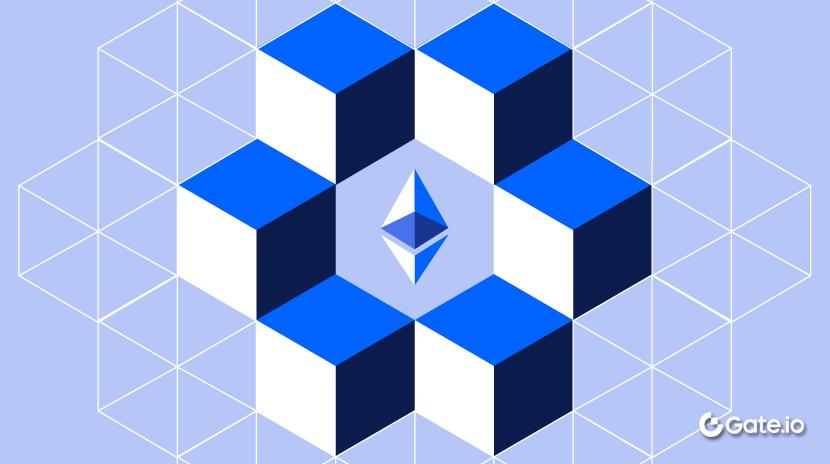Що таке (3,3) Meme?
Дізнайтеся значення мему (3,3), його походження в OlympusDAO та його роль в грі DeFi. Дізнайтеся, як стейкінг, забезпечення та продаж впливають на протокол.Вступ
Меми завжди відігравали важливу роль в культурі криптовалют, часто спрощуючи складні фінансові концепції до зрозумілих та захоплюючих ідей. Хоча деякі меми акцентуються на гуморі, інші служать стратегічними сигналами в межах блокчейн-спільнот.
Одним з таких мемів є (3,3), термін, який виник у теорії ігор і став визначальним поняттям у DeFi 2.0. На відміну від типових мем-монет, (3,3) не був створений як торговий токен, а як символ кооперативних фінансових стратегій у децентралізованій фінансовій сфері.
Спочатку пов'язаний з OlympusDAO, (3,3) заохочував учасників ставити свої активи замість продажу, створюючи довгострокову цінність для спільноти. З часом мема поширилася поза OlympusDAO, впливаючи на проекти, такі як Wonderland, KlimaDAO, TempleDAO, Curve Finance та ve(3,3).
Однак, по мірі розвитку DeFi, моделі, натхненні (3,3), стикалися з серйозними ризиками, що призводило до криз ліквідності та обвалів і критики, що ці проекти нагадують приховані схеми Понці. Ця стаття досліджує, як (3,3) став культурним рухом, його роль в брендуванні DeFi, натхненні проектами та суперечностями, що оточують його стійкість.
Генеза (3,3): OlympusDAO та ігрова теорія
Розуміння OlympusDAO
Запущений у початку 2021 року анонімним розробником, відомим як Зевс, OlympusDAO мав на меті створити децентралізовану резервну валюту, OHM, підтриману скарбом криптовалютних активів, а не традиційними національними валютами. Цей підхід спрямовувався на зменшення залежності криптовалютного ринку від стабільних монет, що підтримуються національними валютами, та надання засобу збереження вартості, який не прив'язаний до долара США.
Мем (3,3) та теорія гри
Мем (3,3) виник від Дилеми в'язня, фундаментального концепції теорії ігор, яка ілюструє, як індивідуальні рішення впливають на колективні результати. У контексті OlympusDAO учасники мають три основні дії:
- Стейкінг (+3): блокування токенів OHM для заробітку винагород, зменшення обігового запасу та потенційне збільшення вартості токена.
- Зв'язування (+1): Надання ліквідності або активів скарбниці в обмін на знижені токени OHM.
- Продаж (-1): Ліквідація утримання OHM, що може справляти тиск на ціну токена.
Нотація (3,3) відображає ситуацію, коли всі учасники вирішують здійснити стейкінг своїх токенів, що призводить до найбільш вигідного результату для спільноти. Ця кооперативна стратегія підвищує стабільність протоколу та узгоджує індивідуальні стимули з колективним процвітанням.
Брендинг OlympusDAO та зростання (3,3)
Залучення спільноти через (3,3)
OlympusDAO ефективно використав мем (3,3), щоб сприяти виникненню в мережі сильного почуття спільноти та зобов'язаності серед своїх користувачів. Підтримувачі додавали (3,3) до своїх імен у соціальних мережах, сигналізуючи про свою співпрацю з кооперативною стратегією стейкінгу протоколу.
Цей органічний прийом перетворив (3,3) у культурний символ у криптоспільноті, що представляє єдність та спільну віру в бачення проекту.
Меми як інструменти брендування
Успіх (3,3) підкреслює силу мемів як інструментів брендування в просторі DeFi. Спрощуючи складні концепції до легкоусвідомлюваних символів, меми, подібні до (3,3), сприяють більшому розумінню та залученню. Вони служать як пункти збору для спільнот, сприяючи формуванню ідентичності та єдності серед учасників.
(3,3) Вплив
Інноваційний підхід OlympusDAO та популярність мему (3,3) надихнули кілька інших проектів DeFi прийняти подібні моделі.
Країна див
Wonderland був одним з найбільш помітних проектів, які прийняли модель (3,3). Запущений як форк OlympusDAO, він мав на меті створити децентралізовану резервну валюту в мережі Avalanche за допомогою свого власного токена, TIME.
Проект пропонував високі винагороди за стейкінг, щоб стимулювати користувачів заблокувати свої токени, аналогічно підходу OlympusDAO. Однак Wonderland зіткнувся зі значними викликами, включаючи контроверзії, пов'язані з управлінням його скарбницею, що призвело до втрати довіри інвесторів та зниження вартості токена.
KlimaDAO
KlimaDAO інтегрувала модель (3,3) з екологічними ініціативами, створивши цифрову валюту, підтриману вуглецем. Користувачі могли ставити токени KLIMA, а казначейство протоколу придбавало вуглецеві кредити для підтримки вартості токену. Цей підхід спрямований на стимулювання компенсації викидів вуглецю за допомогою механізмів DeFi. Хоча інноваційний, KlimaDAO стикалася з викликами, пов'язаними з волатильністю ринків вуглецевих кредитів та стійкістю високих винагород за ставки.
TempleDAO
TempleDAO використовує модель (3,3), щоб створити «безпечне пристановище» для інвесторів DeFi, зосереджуючись на забезпеченні стійких та передбачуваних видач. Проект наголосив на залученні спільноти та довгостроковому зобов'язанні, закликаючи користувачів ставити свої токени для досягнення загальних переваг. Незважаючи на своє унікальне положення, TempleDAO зіткнувся з труднощами у забезпеченні обіцяних видач через коливання на ринку.
Curve Finance та ve(3,3)
Curve Finance, децентралізована біржа, оптимізована для торгівлі стейблкоїнами, представила модель ve(3,3) для покращення своєї токеноміки. У цій моделі користувачі можуть заблокувати свої токени CRV, щоб отримати токени голосування в ескроу (veCRV), що надає їм права управління та частку з торгових комісій. Цей механізм відповідає філософії (3,3), нагороджуючи довгострокову участь та вирівнюючи індивідуальні стимули з успіхом протоколу.
Ризики та критики моделі (3,3)
Хоча модель (3,3) ввела інноваційні механізми для стимулювання стейкінгу та стабільності протоколу, вона також зазнала критики та підкреслила вбудовані ризики, пов'язані з її впровадженням.
Питання сталого розвитку
Високі винагороди за ставки, обіцяні моделями (3,3), викликали питання щодо їхньої довгострокової стійкості. Такі великі виплати часто ґрунтуються на постійних вливах нових учасників для підтримки системи винагород, роблячи паралелі з пірамідальними схемами. Коли збільшення користувачів сповільнюється або розвертається, модель може стати нестійкою, що призведе до зриву вартості токена.
Ризики ліквідності
Стейкінг токенів зазвичай передбачає їх блокування на певний термін, що зменшує ліквідність для учасників. На фондових ринках ця неліквідність може становити значні ризики, оскільки стейкери не можуть оперативно реагувати на спад ринку, що потенційно може призвести до значних втрат.
Розпад моделей (3,3): Що пішло не так?
Незважаючи на їхню початкову успішність, більшість проектів DeFi, натхненних (3,3), врешті-решт зазнали невдач через вроджені економічні недоліки.
Ефект маховика: (3,3) у зворотному напрямку
Моделі (3,3) залежать від постійного потоку нових учасників. Коли новий попит сповільнюється, система руйнується у зворотному напрямку:
- Стейкери усвідомлюють, що вони можуть вийти з прибутком до того, як нагороди розбавляться.
- Все більше людей продають, запускаючи спіраль смерті.
- Скарбниця має проблеми з підтримкою вартості токенів.
Саме тому ранні прихильники проектів (3,3) отримали прибуток, тоді як пізніші учасники зазнали збитків, коли економічне колесо відламалося.
Кризи ліквідності та "банківські паніки"
Багато (3,3) проектів бракувало стійкої ліквідності. Коли довіра підточувалася, користувачі поспішали зняти кошти, спровоковуючи банківські біги.
- Wonderland втратила довіру після свого скандалу, що спричинило масові продажі.
- OlympusDAO побачив, як OHM впав з рівня понад $1,400 до менше ніж $30, оскільки більше користувачів продавали, ніж укладали ставки.
- Навіть KlimaDAO, незважаючи на свою місію ESG, не могло підтримати свою економіку.
Як тільки відсохли ліквідність, механізм маховика обернувся проти власників, доводячи, що нескінченні винагороди за участь не були життєдатними.
Звинувачення у схемах Понці
Критики стверджують, що моделі стейкінгу (3,3) були нестійкими з самого початку, порівнюючи їх з понзі-схемами:
- Вони поклалися на нових інвесторів, щоб виплатити старих інвесторів.
- Здатність скарбниці підтримувати токен послаблювалася з часом.
- Високі APY заохочували спекуляції, а не справжню корисність.
Багато хто у криптовалютному просторі тепер сприймають моделі (3,3) як фінансовий експеримент, який показав ризики стейкінгу DeFi без фундаментальної корисності.
Майбутнє (3,3): Чи воно ще актуальне сьогодні?
Незважаючи на невдачі OlympusDAO, Wonderland та подібні проекти, (3,3) все ще впливає на DeFi сьогодні.
Уроки від ve(3,3) та стійкі моделі DeFi
Проекти, подібні до модифікованого OlympusDAO від Curve Finance ve(3,3), переробили модель для надання переваг управлінським стимулам замість нестійких річних відсотків.
- ve(3,3) показує, що моделі стейкінгу можуть працювати, якщо вони правильно структуровані.
- Багато протоколів DeFi зараз переходять до стейкінгу, спрямованого на корисність, а не на спекулятивну винагороду.
Меми все ще керують криптовалютними наративами
Навіть коли (3,3)-засновані економіки зазнали краху, мем залишається символічним.
- OlympusDAO довело силу бренду в DeFi.
- Криптоспільноти все ще використовують (3,3) як посилання на стратегії гейміфікації.
- Майбутні проекти можуть відродити (3,3) стейкінг з покращеною механікою.
Хоча епоха стейкінгу високого доходу (3,3) вже минула, його вплив на брендування формує криптовалютні наративи.
Висновок
Мем (3,3) був вирішальним у формуванні DeFi 2.0, перетворюючи теорію гри на потужний інструмент брендування. Спочатку популяризований OlympusDAO, він допоміг побудувати сильну спільноту та надихнув кілька проектів, таких як Wonderland, KlimaDAO та ve(3,3).
Хоча деякі з цих проєктів зазнали невдач через нестійкі моделі стейкінгу та кризи ліквідності, інші, наприклад, Curve Finance’s ve(3,3), адаптували концепцію до більш практичної системи. Падіння проєктів на основі (3,3) підкреслило ризики високодохідного стейкінгу та небезпеку покладанняся на постійні нові інвестиції для збереження винагород.
Багато хто зараз бачать ці моделі як фінансовий експеримент, який в кінці кінців розпався під власною вагою. Однак мем (3,3) все ще має культурне значення в криптосфері, доводячи, що брендування та соціальна взаємодія грають велику роль у успіху DeFi. Хоча її економічна модель в основному була покинута, уроки від (3,3) продовжують впливати на те, як нові проекти DeFi розробляють свої механізми стейкінгу та управління.
Пов’язані статті

Детальний опис Yala: створення модульного агрегатора доходності DeFi з $YU стейблкоїном як посередником

Як поставити ETH?

Що таке Солана?

Що таке Coti? Все, що вам потрібно знати про COTI

Все, що вам потрібно знати про Blockchain


